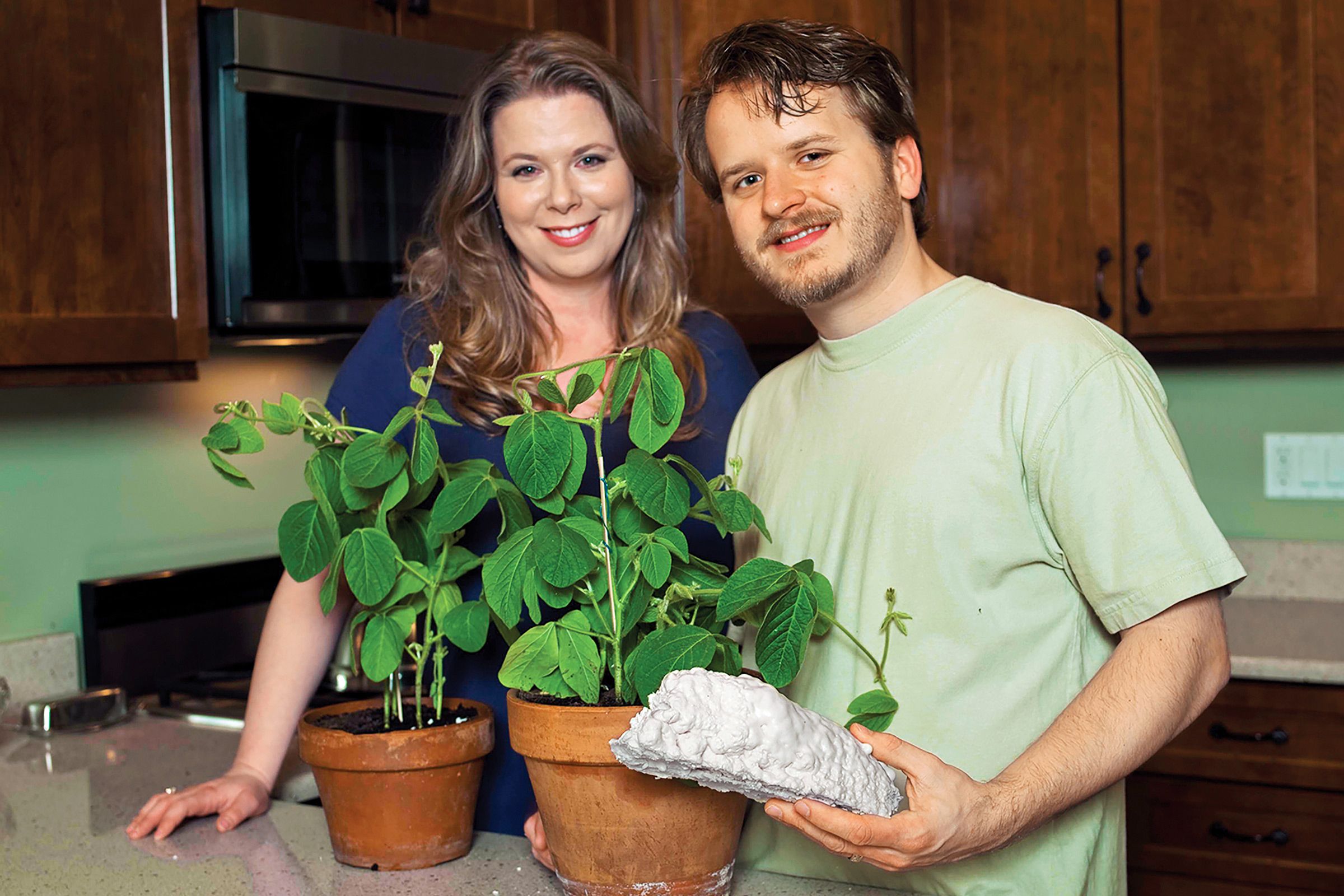As energy cost rise, you’re probably wondering how to keep precious dollars from flying out all the leaks in your walls. The best solution is insulation. It will not only tighten things up come winter, but it will also keep your air-conditioning from going into overdrive when the weather’s still warm. But before you start tearing down drywall, you’ll want to thoroughly research your options.
Chicago homeowners Jason and Jennifer LaFleur practically became experts last year after insulating the newly renovated kitchen in their 1919 Arts and Crafts bungalow. They learned that unlike the traditional pink stuff, some of the most innovative insulation on the market is green, made from various materials, including recycled denim and shredded newspaper. But the most airtight is spray foam derived from soybeans. This renewable alternative to spray foams—packed principally with petrochemicals—is what the LaFleurs chose for the hub of their home.
While the editors of This Old House have written about soy-based spray foams before, we have yet to use it in any of our homes. So to get the real scoop on soy, we asked the LaFleurs the questions that only people who have done the work, shelled out the cash, and lived with the stuff for a while could answer. Here’s what we learned.
Using Soybean Insulation At Home
TOH: Spray-foam insulation, whether it’s made mainly from soybean oil or petroleum, is pricey compared with fiberglass batt—$1.50 to $3 per square foot installed, versus 48 cents. Is it worth the extra money?
The LaFleurs: We wanted the best, most energy-efficient and sustainable insulation we could find for our drafty old house. Soy spray foam was the eco-friendly choice, but we also knew it would get us a better return on our investment with cheaper heating bills: about 15 percent less a year. Spray foam provided a much tighter air barrier than batting. And since we live in Illinois, we figured, why not support local soybean farmers? There are a ton of them here.
TOH: There are a half-dozen companies that make soy-based foam. Which did you choose, and why?
The LaFleurs: We went with BioBased, because the company uses water as a blowing agent to get the foam into the walls instead of CFCs or HCFCs, which are greenhouse gases. We didn’t want chemicals wafting through the house, and the foam itself didn’t even smell bad. We chose a closed-cell version, which hardens as it dries and is stronger than the open-cell one.
TOH: This type is more expensive, but it achieves a higher R-value of 19, using less material, and it better prevents condensation from building up inside the walls. Another selling point was that BioBased guarantees its foam for the life of the house. Unlike some blow- or pour-in insulation, the soy-based spray foam works only when the wall’s open. That means more demo, but does it also require professional installation?
The LaFleurs: Soy foam expands. So while it fills every nook and cranny between the studs, the pressure can also burst existing wall cladding. This wasn’t really an issue for us because we were demolishing our old kitchen. But, yes, we did have to hire someone. The installers sprayed the insulation from a hose attached to a truck parked outside. The work took two days. They blew it in on the first day, and because the foam expands as it dries, they had to come back a second day to trim down the excess and fill any small gaps.
TOH: Can you spray it around electrical wiring in your walls? We’ve heard this can be a problem in older homes.
The LaFleurs: Yes. Soy foam is actually chemically compatible with the plastic that covers new wiring. It might have been a problem with old, exposed wires, but since we had the walls open, we updated the wiring too. We did, however, have to plan ahead for our future electrical needs, as it’s difficult to snake new wires through the closed-cell foam after it hardens (it’s easier with open-cell because that stays soft). We added extra outlets and installed conduit in which to run cables for our flat-screen TV. We can always add more lines through that if we decide to add speakers later.
TOH: The insulation has now carried you through a winter and a summer. How do you rate its performance?
The LaFleurs: Our kitchen is definitely the warmest—and coolest—room in the house. There are also benefits we hadn’t expected. Spray foam is an excellent sound barrier. We don’t hear the ambulances running down our neighboring street on the way to the hospital anymore! Now our kitchen is the quietest room, too. And since it’s so airtight, it also improves our indoor air quality by blocking out pollen and pollution.
TOH: We are big edamame fans, so we have to ask: Can you eat this stuff?
The LaFleurs: No! Just because it’s made from soybeans doesn’t mean it’s edible for people—or insects and rodents for that matter. Mold spores don’t like it either.

